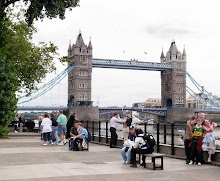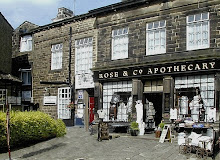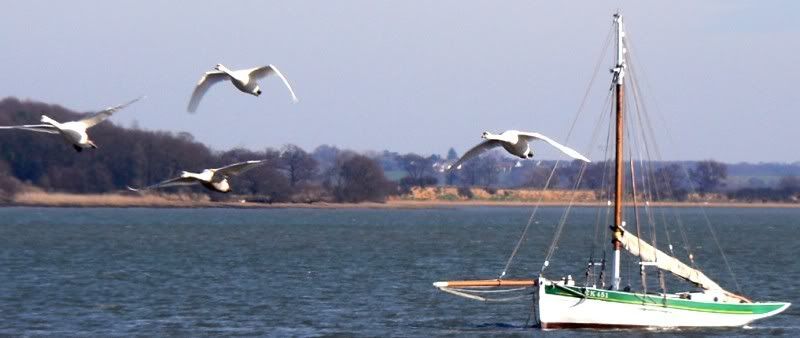“When the end of the world comes, I hope to be in Frinton, which will still be twenty years behind the times.”
Those words come from a local residents’ newsletter in what might well be described as the most boring seaside town in England. I have just returned from a refreshing weekend there and am not complaining about the lack of facilities because that is the charm of Frinton-on-Sea, a small cliff-top town on the Essex coast overlooking the North Sea, which tries hard to pretend that it is still in the Edwardian era.
Unlike so many other coastal resorts, Frinton is not a place to visit for ‘seaside fun’ such as amusement arcades or dodg’em cars, and there is no chance of a concert on the pier, because there isn’t one! Nor are there any ice-cream kiosks or hot dog stands on the promenade or anywhere else in the town, or deck chairs for hire on the beach.
There is however one pub, which got its licence only five years ago when the local council overturned an ancient city ordinance prohibiting such establishments and allowed a Kent brewery (Essex breweries presumably wouldn’t dare to ask!) to open ‘The Lock and Barrel’ as a pub-restaurant in a former locksmith’s premises on the single shopping street, which genteel Frinton calls an avenue . . . so much nicer than ‘street‘, don’t you think?
The town developed in the late 1800s with the coming of the railway and the line became popular in the days before car ownership carrying holiday-makers and day trippers in their thousands to nearby Clacton, which today is a noisy bustling town with amusement arcades in its main shopping streets near the sea-front and a pier which makes a massive contribution to global warming with its blazing lights and over-amplified music pumped out from high-powered loudspeakers masking the sound of £1 coins being pushed at a frantic rate into seemingly endless rows of slot machines.
Frinton has always appealed to a different clientele: in the 1920s and 1930s liveried waiters from the Grand Hotel could be seen carrying tea and cakes on silver trays, across the wide green sward and down the cliffside steps to their customers enjoying the sea air from their beach huts on the promenade. The beach huts are still there but their erstwhile guests, said to have included such latter-day celebrities as famous actors and artists of the day, are not. It is known that a number of works by Picasso were found when clearing the home of a former resident, reputed to have been a friend of the artist, who may have stayed and even worked there, and there was also small sculpture by another friend, Rodin which fetched a considerable sum at auction.
It seems that the residents and city fathers have never courted publicity but valued their isolation, protected from outsiders on one side by the sea and on the other by the railway which is still served by a manned level crossing, seen by today’s residents see as their last line of defence. The words ‘inside the gates‘ are in everyday use to describe the original Frinton, to differentiate it from the sprawling modern housing estate which has sprung up on the other side of the track.
A paragraph in the residents’ newsletter mentions without enthusiasm a mooted plan to replace the gates with an automatic barrier, and this raises memories of the resolute British determination inspired by Winston Churchill’s wartime words, “We will fight them on the beaches”, when every man, woman and child was prepared to take up arms to defend their homeland and way of life from the anticipated invasion. A visitor might be forgiven for asking whether the wartime pill-box, built over 60 years ago and still occupying a commanding position with gun slots facing the level crossing, might yet be called into action.
Those words come from a local residents’ newsletter in what might well be described as the most boring seaside town in England. I have just returned from a refreshing weekend there and am not complaining about the lack of facilities because that is the charm of Frinton-on-Sea, a small cliff-top town on the Essex coast overlooking the North Sea, which tries hard to pretend that it is still in the Edwardian era.
Unlike so many other coastal resorts, Frinton is not a place to visit for ‘seaside fun’ such as amusement arcades or dodg’em cars, and there is no chance of a concert on the pier, because there isn’t one! Nor are there any ice-cream kiosks or hot dog stands on the promenade or anywhere else in the town, or deck chairs for hire on the beach.
There is however one pub, which got its licence only five years ago when the local council overturned an ancient city ordinance prohibiting such establishments and allowed a Kent brewery (Essex breweries presumably wouldn’t dare to ask!) to open ‘The Lock and Barrel’ as a pub-restaurant in a former locksmith’s premises on the single shopping street, which genteel Frinton calls an avenue . . . so much nicer than ‘street‘, don’t you think?
The town developed in the late 1800s with the coming of the railway and the line became popular in the days before car ownership carrying holiday-makers and day trippers in their thousands to nearby Clacton, which today is a noisy bustling town with amusement arcades in its main shopping streets near the sea-front and a pier which makes a massive contribution to global warming with its blazing lights and over-amplified music pumped out from high-powered loudspeakers masking the sound of £1 coins being pushed at a frantic rate into seemingly endless rows of slot machines.
Frinton has always appealed to a different clientele: in the 1920s and 1930s liveried waiters from the Grand Hotel could be seen carrying tea and cakes on silver trays, across the wide green sward and down the cliffside steps to their customers enjoying the sea air from their beach huts on the promenade. The beach huts are still there but their erstwhile guests, said to have included such latter-day celebrities as famous actors and artists of the day, are not. It is known that a number of works by Picasso were found when clearing the home of a former resident, reputed to have been a friend of the artist, who may have stayed and even worked there, and there was also small sculpture by another friend, Rodin which fetched a considerable sum at auction.
It seems that the residents and city fathers have never courted publicity but valued their isolation, protected from outsiders on one side by the sea and on the other by the railway which is still served by a manned level crossing, seen by today’s residents see as their last line of defence. The words ‘inside the gates‘ are in everyday use to describe the original Frinton, to differentiate it from the sprawling modern housing estate which has sprung up on the other side of the track.
A paragraph in the residents’ newsletter mentions without enthusiasm a mooted plan to replace the gates with an automatic barrier, and this raises memories of the resolute British determination inspired by Winston Churchill’s wartime words, “We will fight them on the beaches”, when every man, woman and child was prepared to take up arms to defend their homeland and way of life from the anticipated invasion. A visitor might be forgiven for asking whether the wartime pill-box, built over 60 years ago and still occupying a commanding position with gun slots facing the level crossing, might yet be called into action.







No comments:
Post a Comment